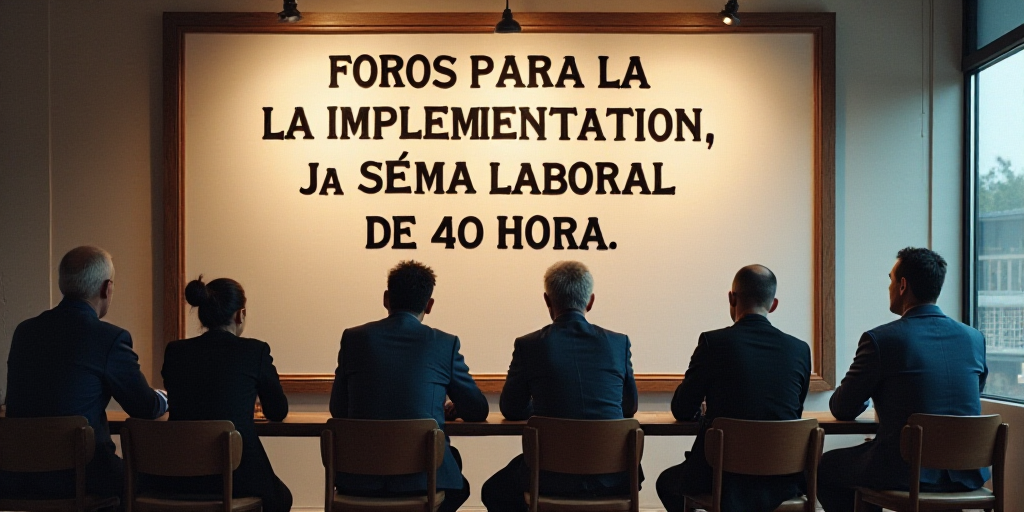Introduction and Forum Overview
The journey towards a 40-hour workweek in Mexico officially commenced on June 19th, as the Secretaría del Trabajo y Previsión Social (STPS) hosted the first of seven forums to construct a project that would gradually reduce working hours. Representatives from businesses, unions, academia, and international organizations presented their proposals for achieving the 40-hour workweek, one of the commitments made by President Claudia Sheinbaum.
Consensus on Key Elements
During the forum, three elements reached consensus: graduality in reducing work hours, flexible application of the norm, and sector-specific changes. Each industry would have tailored rules based on its operations and activities.
Francisco Cervantes, president of the Consejo Coordinador Empresarial (CCE), emphasized that a progressive reduction of work hours, accompanied by complementary measures, is the most responsible and effective way to achieve positive reform goals without negatively impacting the economy or causing inflation due to increased production costs and potential labor shortages.
Ana María Aguilar, executive director of the Consejo Mexicano de Negocios (CMN), echoed these concerns, stating that a gradual reduction in work hours would not negatively affect businesses if implemented carefully and sector-specifically.
Gradual Implementation: Two Years or More
Unions supported the gradual implementation of the 40-hour workweek but proposed a two-year transition period, faster than the federal government’s target of 2030.
Tereso Medina, assistant general secretary of the Confederación de Trabajadores (CTM), advocated for a two-year timeframe, allowing sectors to adapt without affecting productivity or employment. He also suggested elevating the topic to a constitutional reform that guarantees two days of rest for every five workdays.
Napoleón Gómez Urrutia, federal deputy and leader of the Sindicato Nacional de Trabajadores Mineros, Metalúrgicos y Similares de la República Mexicana (SNTMMSRM), supported gradual implementation but proposed a 2027 target date. He suggested creating a legislative and technical commission in 2025 to study legal, economic, and operational impacts, with an initial four-hour reduction in 2026, tax incentives for adopting companies, and further four-hour reductions with technical support, training, and continuous evaluation by 2027.
Costs Labor Not a Barrier
Saúl Escobar Toledo, a UNAM scholar, asserted that Mexico’s labor costs remain low, with wages still below two basic baskets. He believes there is room to reduce work hours without negatively impacting productivity.
Juan Carlos Moreno Brid, another UNAM scholar, emphasized that without economic growth, redistributing income becomes challenging. He called for discussing macroeconomic policies and development agendas to make labor reform sustainable.
Key Questions and Answers
- What is the main focus of the forums? The forums aim to construct a project that gradually reduces working hours in Mexico from the current standard.
- What are the key elements agreed upon by all parties? Gradual implementation, flexible application of the new norm, and sector-specific changes.
- How long do unions propose for the transition? Unions suggest a two-year transition period, faster than the federal government’s target of 2030.
- What are the concerns regarding labor costs? While labor costs in Mexico remain relatively low, scholars emphasize the need for a balanced approach to ensure productivity and economic growth are not negatively affected.
- What role do macroeconomic policies play in this reform? Scholars argue that discussing and implementing appropriate macroeconomic policies is crucial for a sustainable labor reform.






